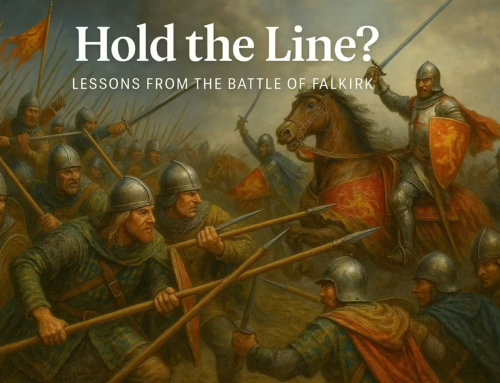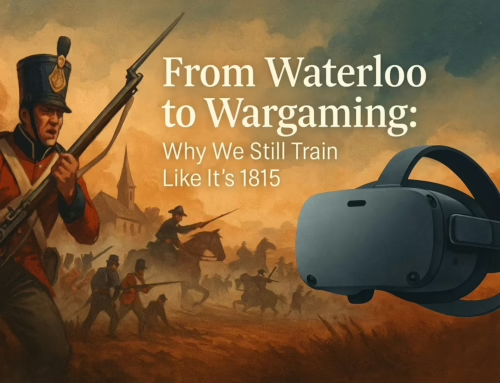Virtual Reality, once the stuff of science fiction, has rapidly become a practical tool in various industries, and its adoption in military and police training is no exception. Creating highly realistic, interactive environments without the logistical challenges and safety risks associated with live training has made VR an attractive option for defence and law enforcement agencies worldwide.
Immersive Learning Environments
One of the critical advantages of VR training is the creation of immersive learning environments. Trainees can be placed in situations that closely mimic real-world scenarios, from hostage to battlefield conditions, all within the safety of a controlled setting. This level of immersion ensures safety and allows for:
1. Heightened Engagement: VR captures trainees’ full attention, leading to better retention of information and skills.
2. Scenario Diversity: A wide range of situations can be simulated, preparing personnel for various challenges they might face in the field.
3. Stress Inoculation: Exposure to high-stress scenarios in VR can help build resilience and improve decision-making under pressure.
Explore the immersive capabilities of our [BattleVR](23) training platform, which offers a comprehensive synthetic soldier training environment for modern combat and law enforcement operators.
Repetition Without Resource Drain
Traditional training methods often involve significant resource expenditure for each iteration. VR training, however, allows for:
– Unlimited Repetitions: Trainees can practice scenarios as often as needed without additional cost or resource allocation.
– Instant Reset: Scenarios can be quickly reset, allowing for rapid adaptation and learning from mistakes.
– Conservation of Physical Resources: No need to constantly replenish physical training materials or ammunition.
Learn more about how our platforms provide both laser and live fire capabilities for versatile and cost-effective training.
Advanced Simulation Capabilities
Modern VR training systems go beyond simple visual simulations. They incorporate a range of advanced features that enhance the training experience:
Haptic Feedback
Many VR training systems now include haptic feedback, providing tactile sensations corresponding to virtual environment actions. This can include:
– Recoil simulation for firearms training
– Force feedback for hand-to-hand combat scenarios
– Environmental sensations like heat or vibrations
The Agincourt Swift Robot integrates advanced haptic feedback to simulate various real-world scenarios, making firearms training more comprehensive and practical.
AI-Driven NPCs
Artificial Intelligence is a critical component of VR training, creating more dynamic and unpredictable scenarios. AI-driven Non-Player Characters (NPCs) can adapt their behaviour based on the trainee’s actions, provide varied and realistic responses to different approaches, and offer unpredictability that mirrors real-world interactions. This integration of AI enhances the realism and effectiveness of VR training.
Data Collection and Analysis
VR training systems excel in their ability to collect and analyse performance data. This allows for:
– Detailed Performance Reviews: Trainers can review every action and decision during a simulation.
– Personalised Training Plans: Data analytics can identify areas where individual trainees need improvement.
– **Overall Program Assessment**: Agencies can evaluate the effectiveness of their training programs and make data-driven improvements.
Our FieldVR system offers a robust data analytics platform for assessing and enhancing training effectiveness through detailed performance metrics and personalised feedback.
Real-World Applications
The applications of VR in military and police training are vast and continually expanding. Some key areas include:
Military Applications
1. Combat Simulation: Soldiers can experience battlefield conditions without the associated risks.
2. Equipment Familiarisation: Personnel can interact with virtual models of vehicles and weapons systems before handling the real thing.
3. Cultural and Language Training: VR can simulate interactions with local populations in foreign deployments.
The Hawk Command System offers an integrated synthetic interface for comprehensive operational oversight and battlefield simulation.
Law Enforcement Applications
1. De-escalation Training: Officers can practice handling tense situations in a safe environment.
2. Active Shooter Response: Teams can coordinate and practice responses to complex, high-stakes scenarios.
3. Forensic Investigation: VR can simulate crime scenes for investigative training.
Our GuardView CT3100 Bodycam enhances situational awareness and accountability, seamlessly integrating with VR training for realistic law enforcement scenarios.
Challenges and Considerations
While the benefits of VR training are significant, there are challenges to consider:
1. Initial Cost: The upfront investment in VR technology can be substantial.
2. Technical Limitations: Current VR technology may only partially replicate all aspects of real-world experiences.
3. Motion Sickness: Some users may experience discomfort during extended VR sessions.
The Future of VR Training
We expect to see even more sophisticated VR training systems as technology advances. Future developments may include brain-computer interfaces, allowing for more intuitive control and potentially simulating psychological states. Integration with Augmented Reality is also possible, blending virtual elements with real-world environments for hybrid training scenarios. These advancements could further enhance the realism and effectiveness of VR training.
Conclusion
Virtual Reality is not just changing the game; it’s redefining the playing field for military and police training. By offering safe, cost-effective, and highly adaptable training environments, VR ensures that our service members and law enforcement officers are better prepared for their challenges. As the technology continues to evolve, we expect VR to play an increasingly central role in shaping the future of public safety and national security training paradigms.
Integrating VR into military and police training represents a significant leap forward in our ability to prepare those who protect and serve. As we continue to push the boundaries of what’s possible with this technology, we’re not just training for the future – we’re actively shaping it.





